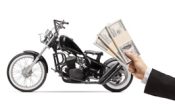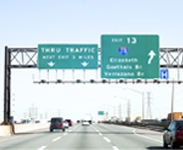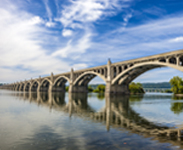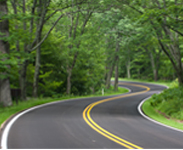Get a Grip – Replacing Motorcycle Handlebar Grips
Sometimes those handlebar grips just aren’t what they used to be. Some OEM grips seems to wear quickly because of their cheap material. Some grips just don’t have the look the bike should have. Time for a change? Sure, why not?
Motorcycle handlebars basically come in two different sizes: 1 inch and 7/8 of an inch. This needs to be determined before the grips are purchased. First measure the size of the diameter of the bar (make sure the grips are off). Some people can be intimidated by this job, but it’s really simple. Most grips are held on with a type of glue; some are not even glued. The easiest way to remove them is simply by cutting them with a razor blade or utility knife, being cautious not to cut into anything underneath. The right hand grip is the throttle grip. It usually has a plastic sleeve that rotates on the handlebar. Be careful when cutting off this grip, making sure not to cut into the sleeve. Nothing will happen if you nick the sleeve, but damage should be kept to a minimum. The grip may need to be pried with a small flat screw driver in order to break the seal of the glue that is on the rubber.
Some new grips have the throttle tube already installed. If this is the case, the entire old tube has to be removed. It is held in place by the throttle assembly. Loosen the throttle cable adjuster nuts (usually located just below the throttle housing). Usually two screws will hold the throttle assembly together. Once it is removed the two throttle cables can be removed from the tube. Slide the old tube off. If there is lubricant on the handle bar; clean that off as well.
The left grip is glued directly to the handle bar. There are some solvents that can be injected under the grip to help dissolve the glue. The grip can be cut with a razor as well. Once it is off, clean the glue off with a lacquer thinner or residue remover. It will actually help the new grip if you scuff the handlebar with a Scotchbrite pad. The new glue with adhere better to the slightly rougher surface.
This site and articles contained herein are provided for general informational purposes only and are not a substitute or intended as professional advice. Please be sure to refer to your owner’s manual or consult a mechanic for information specific to your motorcycle. The information contained on this site and articles contained herein are provided on an “as is” basis with no guarantees of completeness, accuracy, usefulness or timeliness and without any warranties of any kind whatsoever, express or implied. Rider Insurance Company, Rider Insurance Agency, Inc. and its affiliates (together, “Rider”) assume no responsibility for any errors or omissions in the content of this site and articles contained herein. Any action taken upon this information is strictly at your own risk and Rider will not be liable for any losses or damages in connection with your use of this site and articles. Additional terms and conditions apply and are available at https://model.rider.com/plymouth-rock-assurance-general-terms-and-conditions/.

Throttle side grip should be 1/8 of an inch larger to slide over the throttle tube if it is not already installed. When installing a new tube/grip assembly, make sure you put new grease on the throttle side of the handle bar as this will aid in the twisting motion of the grip. Slide the tube down the bar and re-attach the cable ends to it. Reassemble the housing with the two screws and tighten the cable adjusters. Adjust to the endplay recommended by the manufacturer of the motorcycle.
Putting the grips in hot water will help loosen them up a bit. Make sure to dry the grip off before installation and apply a generous amount of new glue. Slide the grip up the handlebar. Some grips may come with decorative end caps which can be applied. Not all grips may be the same. Some metal grips will have different techniques for installation. Follow all instructions that come with the grips thoroughly.
Plymouth Rock Assurance is a marketing name used by a group of separate companies that write and manage property and casualty insurance in multiple states. Motorcycle insurance in New Jersey and Pennsylvania is underwritten by Rider Insurance Company. Each company is financially responsible only for its own insurance products. Actual coverage is subject to the language of the policies as issued by each separate company.





